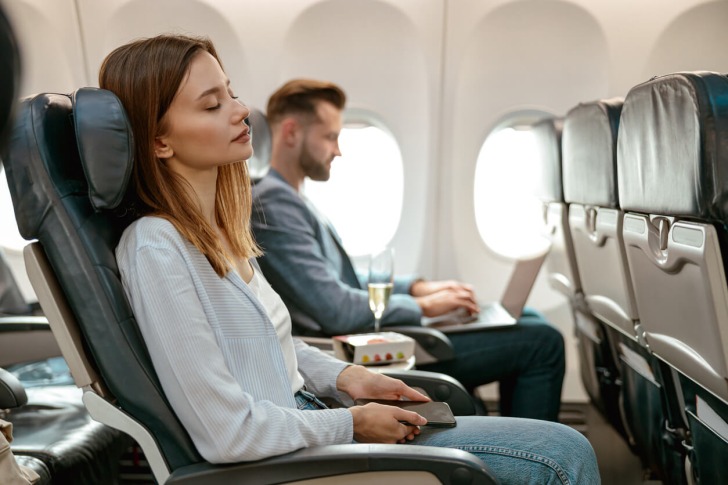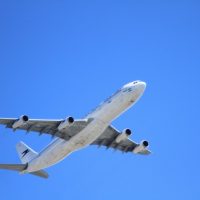Domestic and international travel has become an integral component of our daily lives.
Increasing reliance on air travel for leisure, business travel, and global exploration begs the question – how safe is flying in 2025?
If you’re planning on taking a flight and have concerns about what airlines and airports are doing to keep passengers safe – this is the guide for you!
Keep reading to learn about potential threats to international and domestic flights and learn what remarkable safety measures and advancements in air travel security are keeping travelers safeguarded while they are soaring through the clouds on the way to their next destination.
Contents
- Potential Threats to Airports and Flights
- US Airport Safety Measures
- Early Threat Detection and Mitigation Helps Identify and Prevent Security Risks
- The Federal Aviation Administration and US Transportation Safety Administration Require Pre-Flight Security Screenings
- Specialized Crew Training Helps Prevent Hijackings and Medical Emergencies
- Stringent Aircraft Maintenance Keeps Airplanes Functional and Airworthy
- Passenger Participation and Education Helps Keep Flights Safer
- Placement of US Air Marshals on Domestic Flights Limits the Ability for Criminals to Strong Arm Passengers and Crew Members
- Limited Access to Pilots and Flight Crews Prevents Unauthorized Use of Airline Controls and Diverting Flights
Potential Threats to Airports and Flights
The United States Transportation Safety Board, airports, and staff all work together to prevent potential threats from affecting US passengers.
Airport staff and flight crew members are required to undergo stringent training and continuing education that teaches them how to prevent and respond to airplane emergencies.
Following are examples of common threats to US flights that are reduced or eliminated by implementing appropriate airport safety measures to prevent their occurrence.
Potential Threat #1. – Terrorists Have a History of Attempting to Smuggle Contraband and Hijack Planes
Anyone who watches the news knows that terrorists have a history of targeting US airlines and flights to carry out their dastardly deeds.
Terrorists have the potential to snuggle weapons, hijack flights, and carry out other criminal activities that place passengers and airports in jeopardy.
US airports are mitigating terrorist threats through the use of electronic surveillance, the placement of US Air Marshals on flights, and restricting access to airplane cockpits during travel.
Potential Threat #2. Cyber Attacks on Air Traffic Control Systems and Airplane Controls
Our increasing access to and use of technology is leading to an inevitable increase in cyberattacks on critical businesses and infrastructure — including airports.
Left unchecked, cyberattackers can target airline reservation systems or air traffic control systems to disrupt critical airport operations and flight schedules.
Airports are fighting back by implementing proactive and reactive security measures that protect key airport controls and systems.
Potential Threat #3. – Physical Attacks on Other Passengers and Crew
An increasing number of physical attacks against passengers and crew can take shape as shootings, bombings, and hostage-taking.
American airports have implemented strict security and safety protocols to prevent and deter physical violence on airplanes by educating passengers, restricting access to flight crew and cockpits during flights, and placing in-flight police on planes.
US Airport Safety Measures
Airport safety measures encompass a set of procedures and protocols designed with the primary goal of protecting passengers, employees, and aircraft from potential threats.
The Federal Aviation Administration and the TSA work together to ensure global safety measures are implemented at all public and private airports in the US.
Today’s airport safety measures in public airports typically include:
- Passenger Screenings
- Baggage Screenings
- Airport Security Measures
- Access Control
Early Threat Detection and Mitigation Helps Identify and Prevent Security Risks
US airports are proactive in protecting airports by implementing security measures to mitigate potential threats.
Travelers will find security features like closed-circuit TV cameras, motion detectors, and other forms of digital surveillance that monitor the comings and goings of all parties entering and exiting airports and airplanes.
The Federal Aviation Administration and US Transportation Safety Administration Require Pre-Flight Security Screenings
One of the primary methods of deterring nefarious actors from boarding flights originating from the US is pre-flight safety screenings.
The US Transportation Safety Administration trains and staffs airport staff to conduct screenings of people and their property before they can board any flight leaving from a public airport.
Specialized Crew Training Helps Prevent Hijackings and Medical Emergencies
US flight attendants, pilots, and all members of flight crew receive intensive training that teaches them how to handle security issues that arise mid-flight.
Flight crews are trained on mid-flight evacuation procedures and use safety equipment like portable AEDs for medical emergencies that happen in the air.
Stringent Aircraft Maintenance Keeps Airplanes Functional and Airworthy
All inbound and outbound aircraft landing at domestic airports undergo rigorous preventative maintenance checks to ensure the planes are in safe and airworthy conditions.
Highly trained aircraft mechanics conduct regular inspections of airplane engines, systems, components, and connected equipment to reduce the likelihood of a maintenance-related disaster happening in mid-air.
Passenger Participation and Education Helps Keep Flights Safer
Today’s airports and airlines encourage passenger and aircraft safety with the help and support of passengers.
Travelers are required to undergo Pre-Flight security checks, refrain from carrying illegal items, and remain strapped in their seatbelts during flights – unless flight leaders and flight crews otherwise direct them.
Airline cabin crew walk passengers through essential safety precautions and educate them on how to respond in an emergency and how to use emergency exits when usual events requiring rapid evacuation of airplanes occur during flights.
- Emergency Exit Locations
- How to Use Emergency Exit Ramps for Quick Evacuation
- How to Wear and Use Oxygen Masks
Placement of US Air Marshals on Domestic Flights Limits the Ability for Criminals to Strong Arm Passengers and Crew Members
Many travelers feel safer when they know that highly trained police officers in the air are aboard domestic flights.
US Air Marshals are specially trained law enforcement officers who blend in with passengers on flights with the sole purpose of deterring and responding to air emergencies like hijacking attempts and in-flight violence among passengers.
Almost all airlines have what is known as a “sterile cockpit.” Sterile Cockpit is a term used to describe the locking of airplane cockpit doors to prevent unauthorized entry of hostile passengers and other nefarious actors intent on hijacking planes or interfering with the airplane’s primary controls and steering mechanisms.
Limited access to pilots and crews helps keep passengers and planes safer from seizing and tampering mid-flight.












Airports in the US have implemented strict security measures, including passenger and baggage screenings, access control, and training for flight crew members to prevent potential threats such as terrorism and physical attacks on passengers.